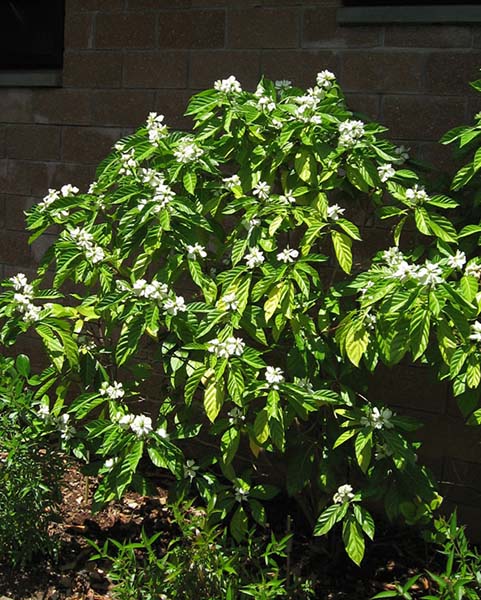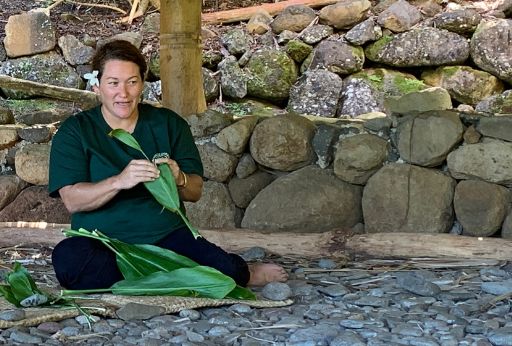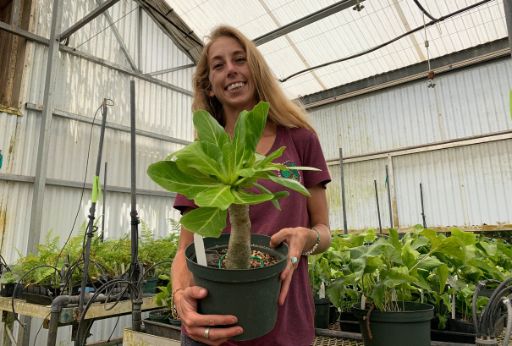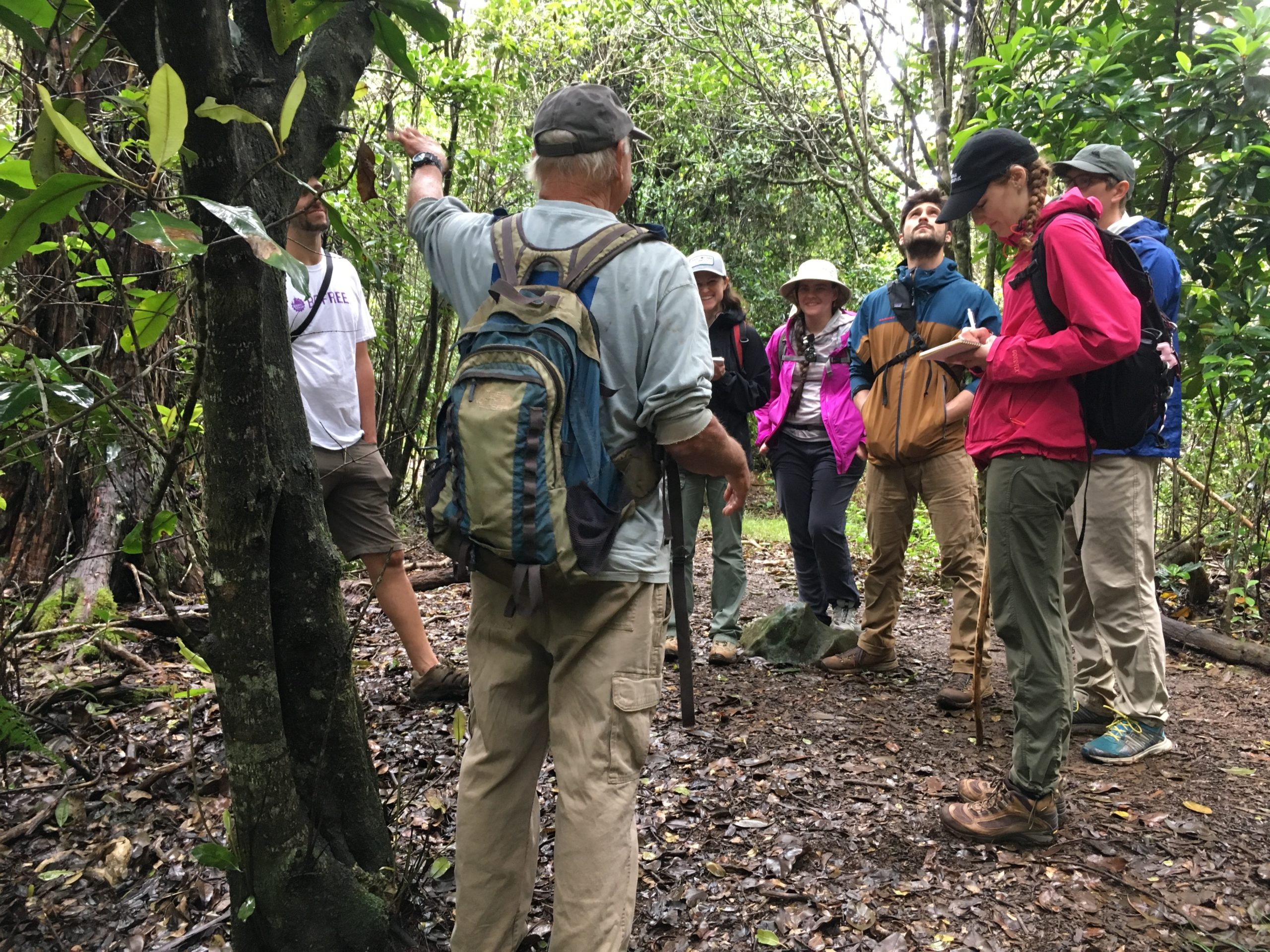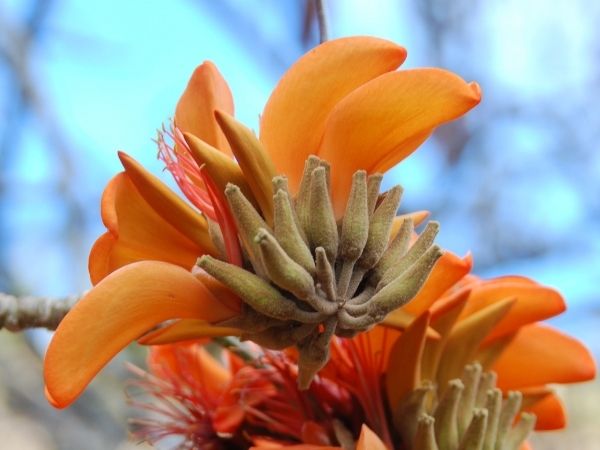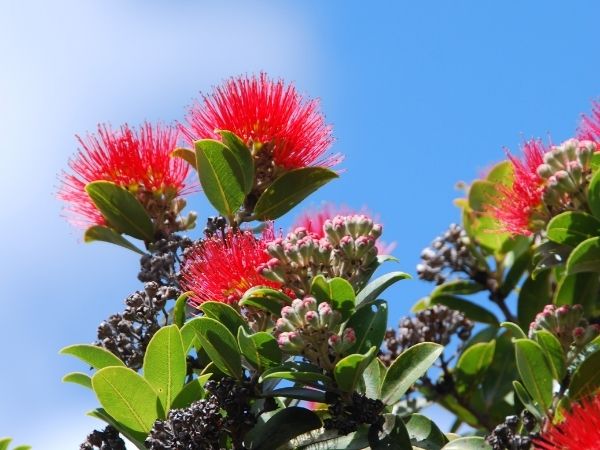Tropical Plant Database - Plant Details
Morinda latibractea
Click on any heading above to view more information about this plant
Conservation Status
- IUCN: Not Evaluated
- USFWS: None
Family: RUBIACEAE
Genus: Morinda
Species: latibractea
Species Author: Valeton
Vernacular: Kesengelengel, Ngel - Palauan [Perlman 21199]
Genus: Morinda
Species: latibractea
Species Author: Valeton
Vernacular: Kesengelengel, Ngel - Palauan [Perlman 21199]
Morinda latibractea is a tall shrub or small tree 3-5 m tall. Leaves are broadly elliptic to oval shaped 8-15 x 3-5, with pointed tips. The leaves are smooth except for small tufts of hairs surrounding domatia (compartments which house resident mites or other tiny insects) in the axils of the leaf veins. The white, tubular true flowers are only 5 mm across, but large, attractive expanded white calyces (calycophylls) are much more conspicuous. Flowers grow in dense heads of 4 to 12. The fruit is round and bumpy like a miniature noni fruit, but only about 1 cm across and fleshy. When ripe, it has several seeds and turns soft and white with a foetid smell.
(Engl. Jahrb. lxiii. 321. 1930)
(Engl. Jahrb. lxiii. 321. 1930)
Geographic Distribution: Morinda latibracteata is endemic to the rock islands of Belau (Palau).
(Engl. Jahrb. lxiii. 321. 1930)
(Engl. Jahrb. lxiii. 321. 1930)
Apparently secure. The species does well in cultivation at NTBG's McBryde Garden on Kauai.
There are between 50 to 80 species of Morinda, mostly in the old-world tropics. All Morinda flowers are heterostylous, meaning that flowers have variable style length to prevent self-fertilization.
(Staples, G. W. and D. R. Herbst. 2005. A Tropical Garden Flora: Plants cultivated in the Hawaiian Islands and other tropical places. Bishop Museum Press, Honolulu, Hawai`i.)
(Staples, G. W. and D. R. Herbst. 2005. A Tropical Garden Flora: Plants cultivated in the Hawaiian Islands and other tropical places. Bishop Museum Press, Honolulu, Hawai`i.)
- 026706 - collected by Tim Flynn in 1998
- 028394 - collected by Tim Flynn in 1998
- 027548 - collected by David H. Lorence in 1998
- 027547 - collected by David H. Lorence in 1998
- 034816 - collected by David H. Lorence in 2001
- 048148 - collected by Michael J. Balick in 2007
- 062323 - collected by Steve Perlman in 2008
- 069189 - collected by Steve Perlman in 2008
- 082214 - collected by David H. Lorence in 2017
We currently have 9 herbarium specimens for Morinda latibractea in our collection. Click on any specimen below to view the herbarium sheet data.
.svg)

